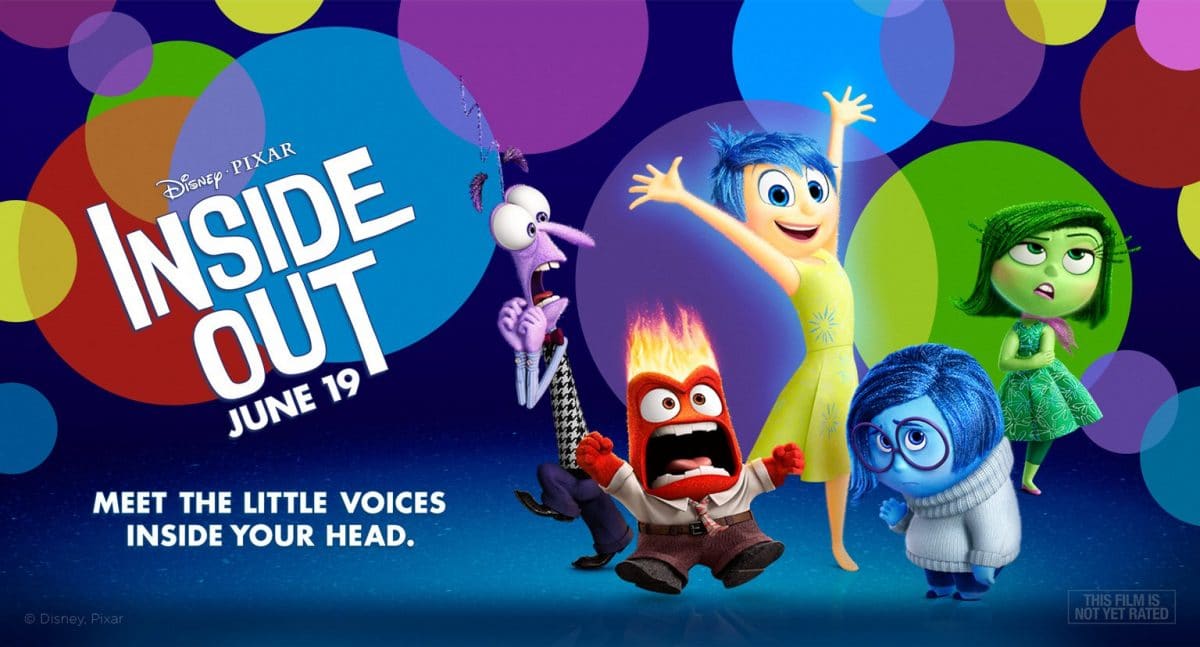
Story by: Pete Docter & Ronaldo Del Carmen
Screenplay by: Meg LeFauve & Josh Cooley and Pete Docter; Additional Dialogue by Amy Poehler & Bill Hader
Directed by: Pete Docter, Ronaldo Del Carmen
Genre: It’s a bit difficult to pinpoint an exact genre for Inside Out. It has elements of Dude with a Problem, with Joy as the innocent hero who is suddenly thrust into a life or death situation (emotionally) that impacts Riley. At the same time, it can be seen as a Buddy Love story, with Joy as the incomplete hero, ultimately realizing that she needs Sadness, her counterpart, to feel complete. But the story also functions as a Rite of Passage for Joy. From the start, Joy always intends to keep Riley happy. Yet when Riley undergoes a major life problem emotionally, Joy continually tries to solve things solely with happiness, a wrong way. It is only during her Dark Night of the Soul that she arrives at acceptance with the fact that Sadness has an important role to play in Riley’s life as well. I’d appreciate your Comments to discuss the film’s genre.
Opening Image: White nothingness opens into the image of a baby, Riley.
Set-Up: Joy (voice: Amy Poehler) narrates and tells about Riley’s early life and how memories are created through her emotions. As Riley develops, more emotions join Joy in the control room: Sadness (voice: Phyllis Smith), Fear (voice: Bill Hader), Disgust (voice: Mindy Kaling), and Anger (voice: Lewis Black). Riley also has core memories that power islands, which are important components of her personality. These include Family, Friends, Hockey, Goofball, and Honesty Islands. Save the Cat!® moments for Riley and the emotions abound as we view memories of Riley’s young life, endearing her to us.
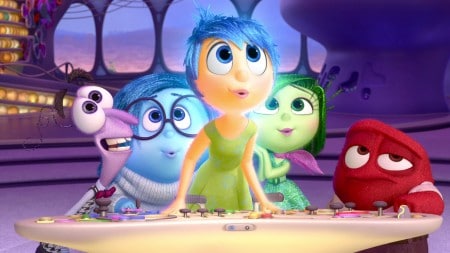
As each of the emotions take over the controls for Riley, Joy tries to keep Sadness away, instead having her read the manuals of the mind. In Joy’s thesis world, it is her goal to ensure that Riley is always happy. But this is a stasis=death situation; as Riley grows, she cannot always remain happy. She must experience true emotion if she is to grow.
Theme Stated: When Riley’s family moves to San Francisco, Joy tells the emotions that they must make sure they create happy memories for Riley (voice: Kaitlyn Dias). “There’s always a way to turn things around,” she says, adding that they just need to find the joy in things. This theme of whether or not memories must always be happy is what will be debated as Joy learns what it means to truly guide Riley’s emotional state.
Set-Up (Continued): Riley’s initial impression of her new home in San Francisco is disappointing, and Joy attempts to trigger happy memories of the road trip. Sadness touches the memory and turns it from joyful to sad. The emotions learn that once a memory is changed, it cannot be reversed. Sadness also complicates things when she tries to touch one of the core memories, knocking all of them out of place.
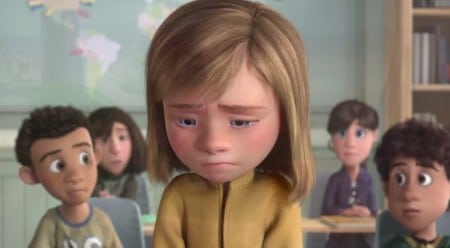
Catalyst: On Riley’s first day at her new school, she introduces herself to the class while recalling a happy memory from Minnesota, but Sadness touches the memory. This changes it to a sad one, causing Riley to cry in front of the class. A new core memory is created, but for the first time, it is a sad one.
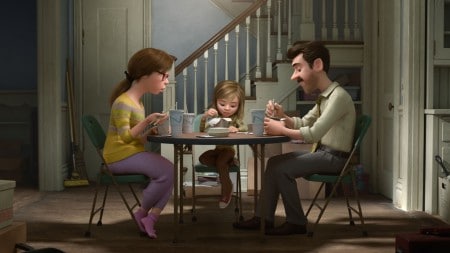
Debate: Now that Riley has a sad core memory, will she still be able to function at this new school? Innocent hero Joy reacts to this sudden event by attempting to dispose of it, but she struggles with Sadness, knocking all of the core memories out. This causes Riley to lose her personality, and Joy and Sadness are soon sucked through a tube into Riley’s long-term memory, a labyrinthine structure. How will they ensure Riley’s happiness now? Without Joy and Sadness at headquarters, Riley has difficulty responding to her parents. Riley is sent to her room after an outburst directed toward her dad. Although he later tries to cheer Riley up with silliness, without her core memories in place, Goofball Island in her personality crumbles. In a way, this is a life or death situation in terms of Riley’s personality and sense of emotional well-being.
Break into Two: Now stranded in long-term memory, Joy and Sadness enter the upside-down world of being unable to control Riley’s emotions. In her antithesis world, Joy cannot ensure Riley’s happiness.
B Story: The relationship between Joy and Sadness will propel the story forward, affecting the A Story of Riley’s emotional state and relationship with her parents.
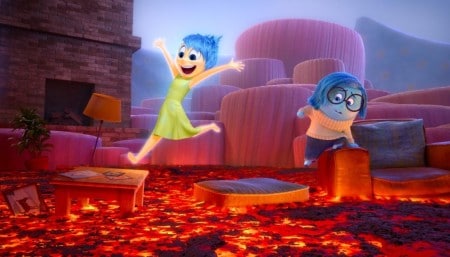
Fun and Games: Joy and Sadness try to navigate the maze of long-term memories. Luckily, Sadness has read the manuals, so she helps direct them. Along the way, they witness mind workers getting rid of some long-term memories. They also encounter Bing Bong (voice: Richard Kind), Riley’s imaginary friend who has a rocket wagon powered by song. Bing Bong leads Joy and Sadness to a shortcut for the Train of Thought, which will take them back to headquarters. Meanwhile, Riley becomes frustrated with her best friend from Minnesota and responds in anger, resulting in Friendship Island crumbling. Bing Bong leads Joy and Sadness through Abstract Thinking, Imagination Land, and Preschool Land, the latter of which is being demolished.
Midpoint: After seeing his wagon tossed into the Memory Dump with other items from Preschool Land, Bing Bong is disheartened; it was his only connection to Riley, who will now forget him. While Joy tries to cheer him up with platitudes, Sadness shows her value by empathizing with him. The Train of Thought arrives, but it is a false victory as A and B Stories cross. A time clock is ticking as the stakes are raised: if Joy and Sadness do not get back to headquarters with the core memories, Riley’s personality may be lost forever.
Bad Guys Close In: Riley goes to hockey tryouts, but without her core memories, she fails, and Hockey Island crumbles. Anger contemplates giving her the idea to run away and go back to Minnesota where she created her core memories in the first place.
Joy and Sadness take the Train of Thought to headquarters, but when Riley falls asleep, the train stops. Joy hands the core memories to Bing Bong while she and Sadness try to wake Riley up by acting in her dream. Dream Production stops them and captures Bing Bong, imprisoning him in the Subconscious. Joy and Sadness rescue him, using a clown they find to cause a nightmare. Riley wakes, and the three are able to use the Train of Thought again. Anger finally invokes Riley’s inner bad guys, giving her the idea to run away by stealing her mom’s credit card. Honesty Island crumbles as the train passes, and the track collapses. While Joy watches Family Island begin to crumble, she spies a recall tube that leads to headquarters. She uses it but prevents Sadness from doing so at the risk of changing the core memories. The tube breaks, and Joy falls into the Memory Dump with Bing Bong and the core memories.
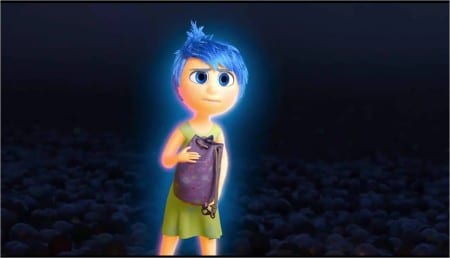
All Is Lost: Joy sits with Bing Bong where all the forgotten memories go. Some are being erased before their very eyes, and the whiff of death is present in the potential loss of the core memories and Riley’s personality. Even worse, if Joy is erased, Riley will cease to know happiness. As Riley runs away, Family Island continues to crumble.
Dark Night of the Soul: Sitting in despair, Joy rewinds and watches a happy core memory. In doing so, she realizes that it was sad at first, but that feeling sad was what made others come to Riley’s aid to create a happy memory.
Break into Three: As A and B stories meet, Joy realizes that Sadness is sometimes necessary to find happiness. In this synthesis world, Joy has learned the theme that to be truly happy, there needs to be a balance of emotions. Bing Bong and Joy find the rocket wagon in the Memory Dump and use it to get back to the Long-Term Memory, but not before Bing Bong sacrifices himself for Riley’s ongoing happiness.
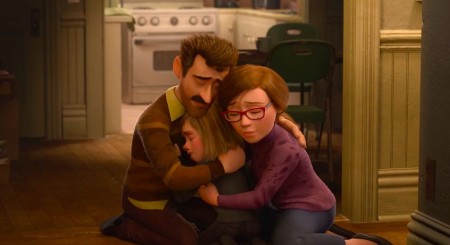
Finale: The control panel at headquarters begins going dark as Riley becomes emotionless. Joy finds Sadness and convinces her that she is necessary to Riley, and the two make it back to headquarters together. Joy insists that Sadness takes over the control board, getting rid of the idea to run away. Riley realizes her error and gets off the bus to return home. Joy digs down deep to hand the core memories to Sadness. They turn blue, the color of Sadness, and as Riley confides in her parents, she is comforted. Sadness has helped Riley find happiness through her parents.
Final Image: New islands form in Riley’s personality as she bonds with her parents and her life improves. A new control panel is installed at headquarters with a button for puberty. As the image of her playing hockey fades, Joy states that Riley is twelve now, asking, “What could possibly go wrong?”
Next week: The Lava Beat Sheet
Cory Milles
4 Comments
Leave a Reply Cancel reply
You must be logged in to post a comment.


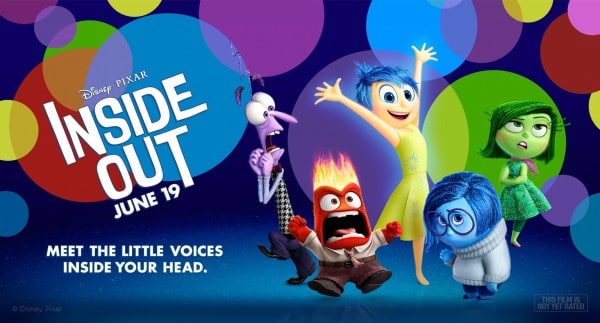

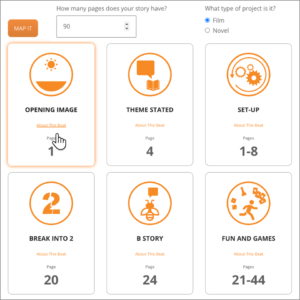





GREAT beat sheet, Cory! I loved this movie to pieces and was dissecting it long after I watched it (twice). You’ve really nailed the beats and the emotional story here, which Pixar, of course, does so well.
What else I loved about this story were the small nuances relating to the control board. As one gets older, our emotions get more complex, hence needing a new, high-tech board to control them all.
And as you’ll notice, when we get small glimpses into other people’s heads, namely adults (like mom and dad) all the emotions are lined up at the control panel, working TOGETHER, in comparison to Riley’s head (a child) where all the emotions are constantly battling for control, pushing each other out of the way. (Or in the mind of the pre-teen boy we see at the end, running around like crazy with no one at the controls!)
As we grow up, we learn how to manage our emotions better (or hopefully anyway!)Joy and Sadness working together in the Finale is the first step toward that stage of “adulthood” for Riley.
Another small nuance which I loved was noticing WHICH emotion is in the center of each adult’s control board. For Mom, it was sadness, for dad Anger, for the pizza shop employee, it was disgust. It seems that even as we grow up and our emotions learn to work together, there still seems to be a dominant emotion at the center of it all!
Thanks again for this Cory! Really enjoyed reading it!
Yeah Cory, this is a great breakdown!
I’d offer that the A story is a Rites of Passage / Adolescent Passage, and the B Story is a Buddy Love / Professional Love. I get the Dude with a Problem element and that the potential death of her Personality is a life / death battle metaphorically, but not actually. It certainly influences the overall story.
I would argue that it is a Rite of Passage story. I don’t think Joy is an innocent hero because she has been manipulating Riley’s memories to keep most of them joyful. Also, I don’t think it’s a buddy story because Joy doesn’t need Sadness to feel complete; Riley is the one who needs Sadness. Your description of the Rite of Passage is more detailed and hits all the most important elements of the movie.
Just my two cents. Thanks for the post!
Thanks, Jessica, for the wonderful insight. I totally agree… it’s great to see the insight into how other people’s emotions function. Pixar does a great job showing the idea that as we grow, our emotions work together.
Bryan and Beverly, thanks for your comments on the genre. I agree with you that the A Story is Rite of Passage. That was my first “feeling” all along (no pun intended). It is interesting that the writers were able to take an emotion and give them a Rite of Passage story that extends to the main character’s Rite of Passage as well. And the Dark Night of the Soul was a fantastic revelation. I will admit that even as an adult, it made me think a lot and realize that sadness and hardship do have a purpose in helping us relate to others.